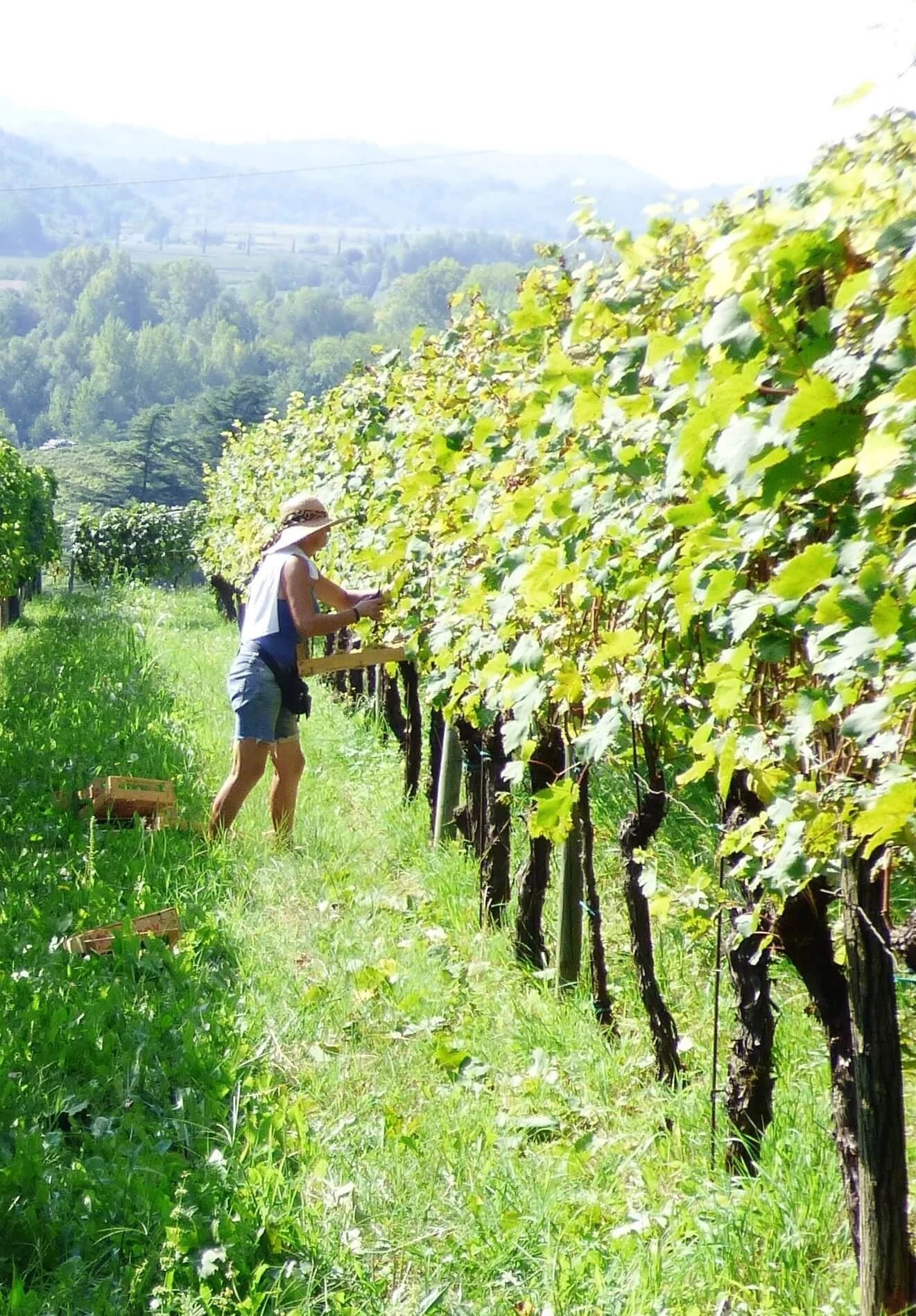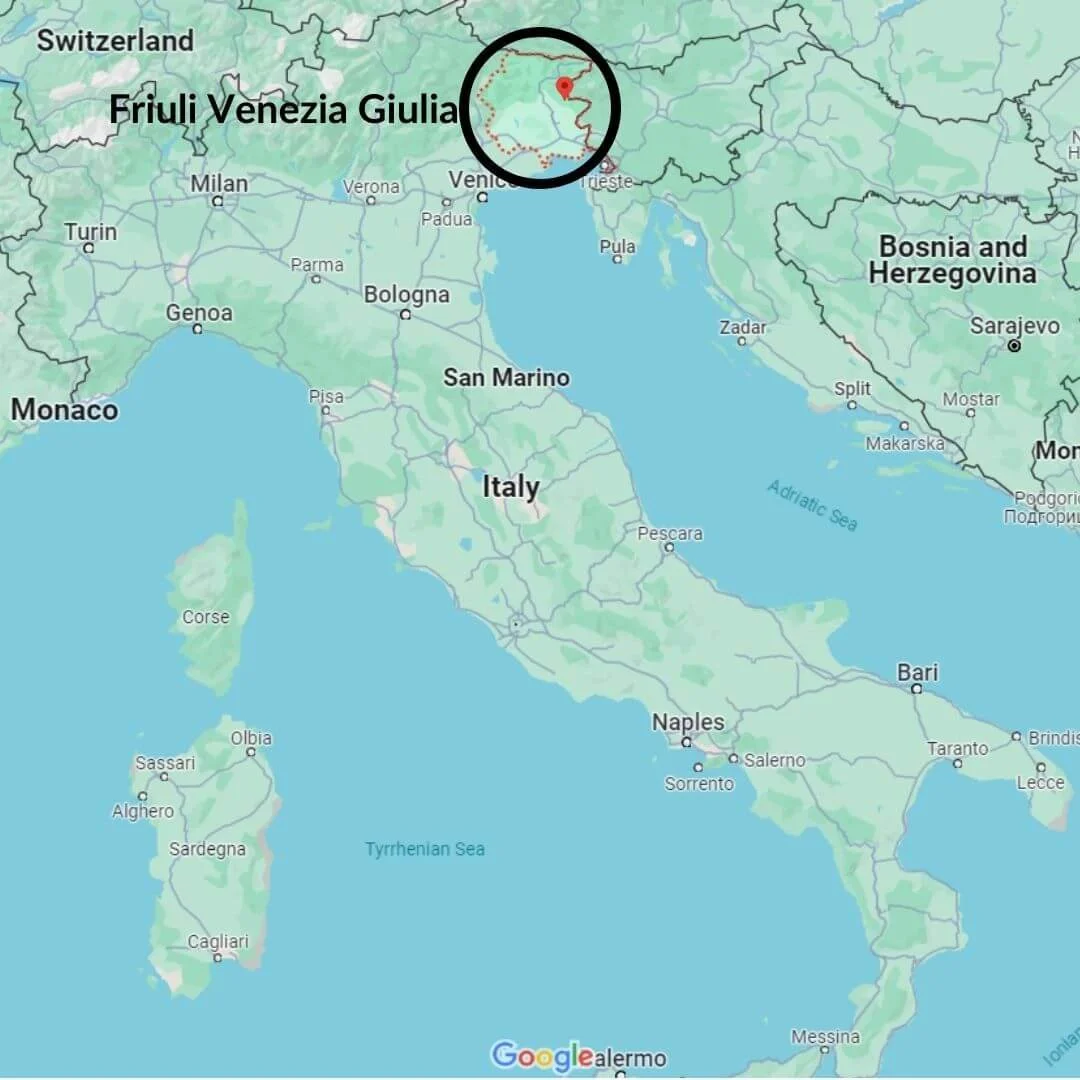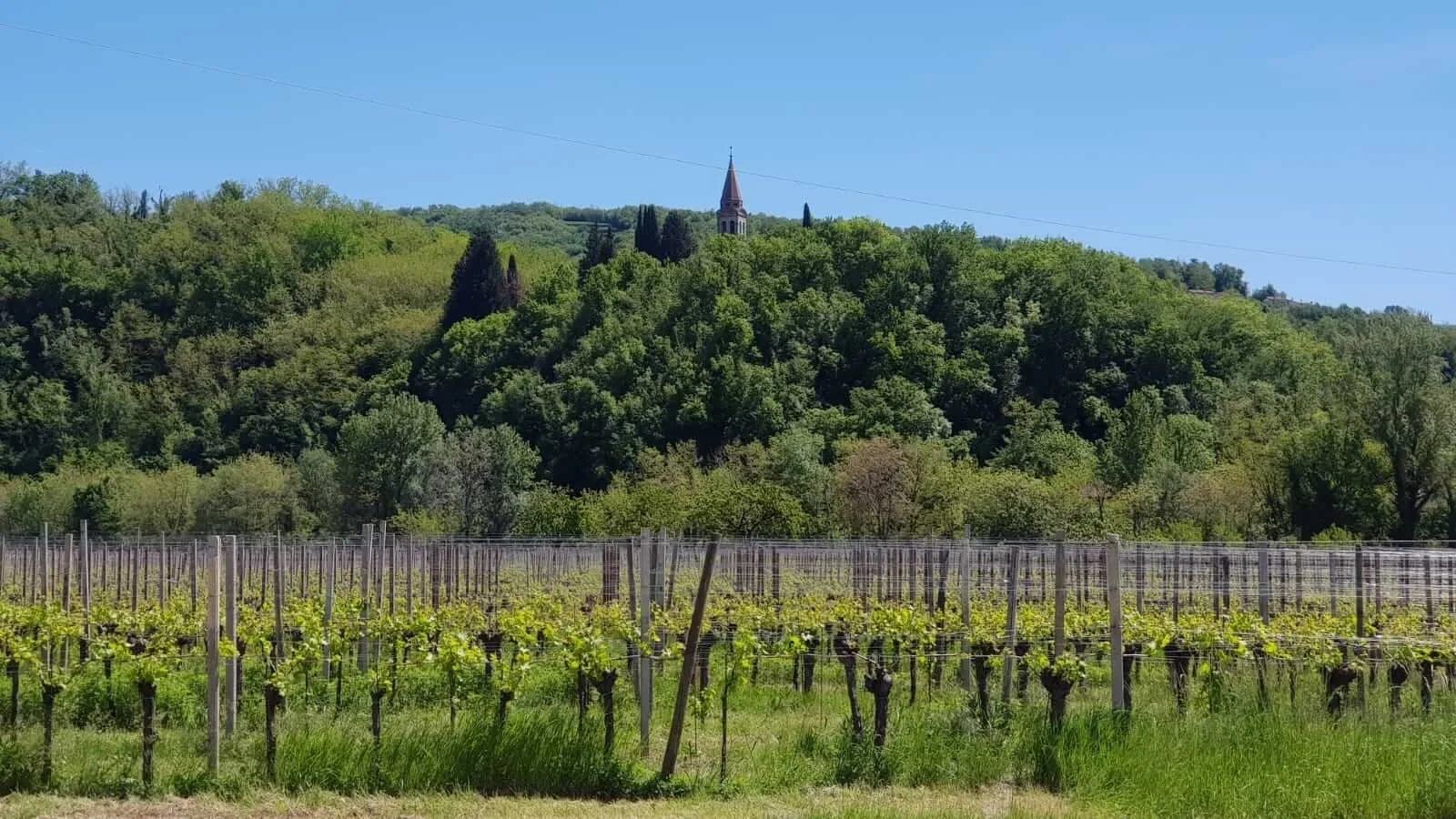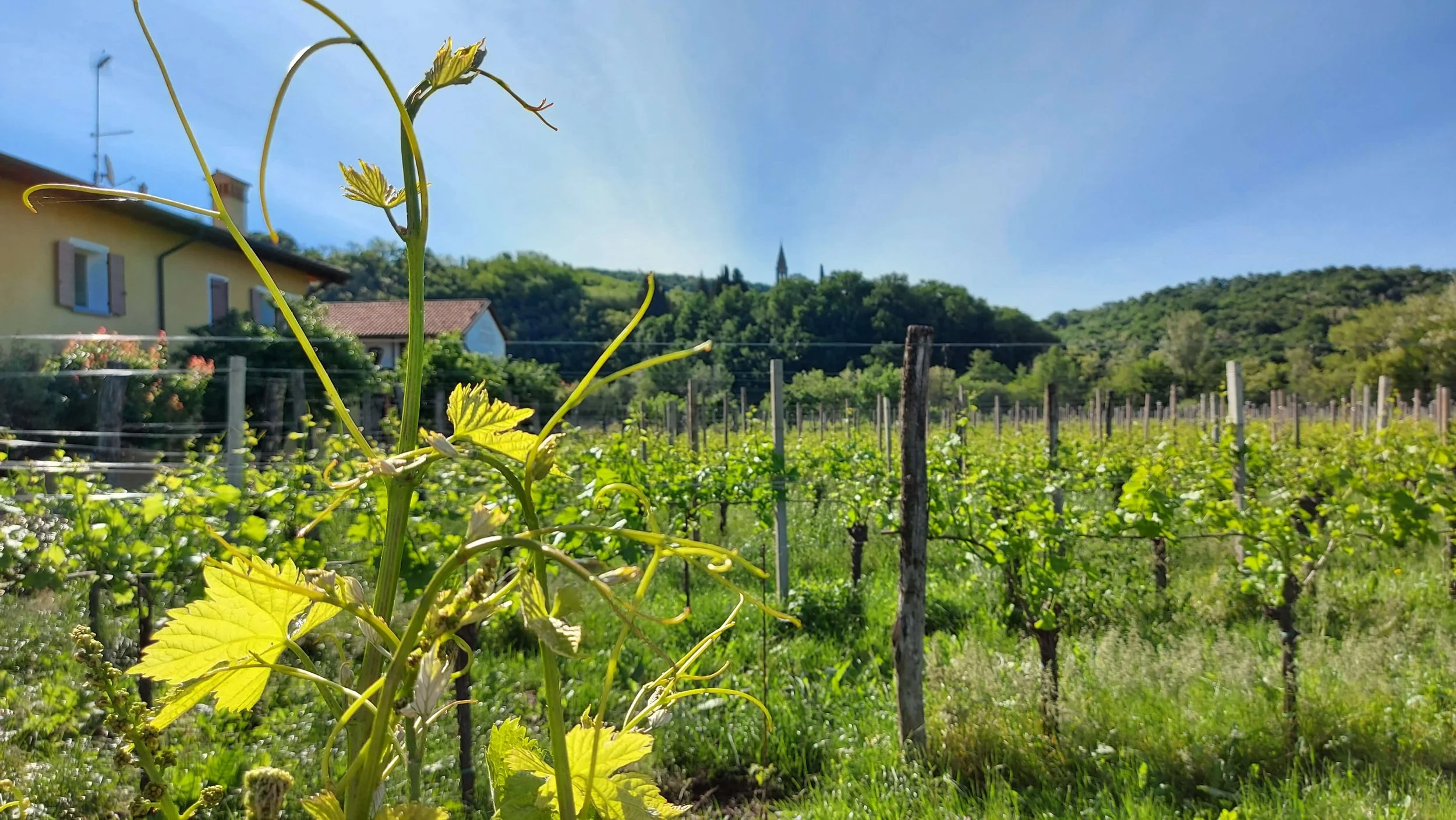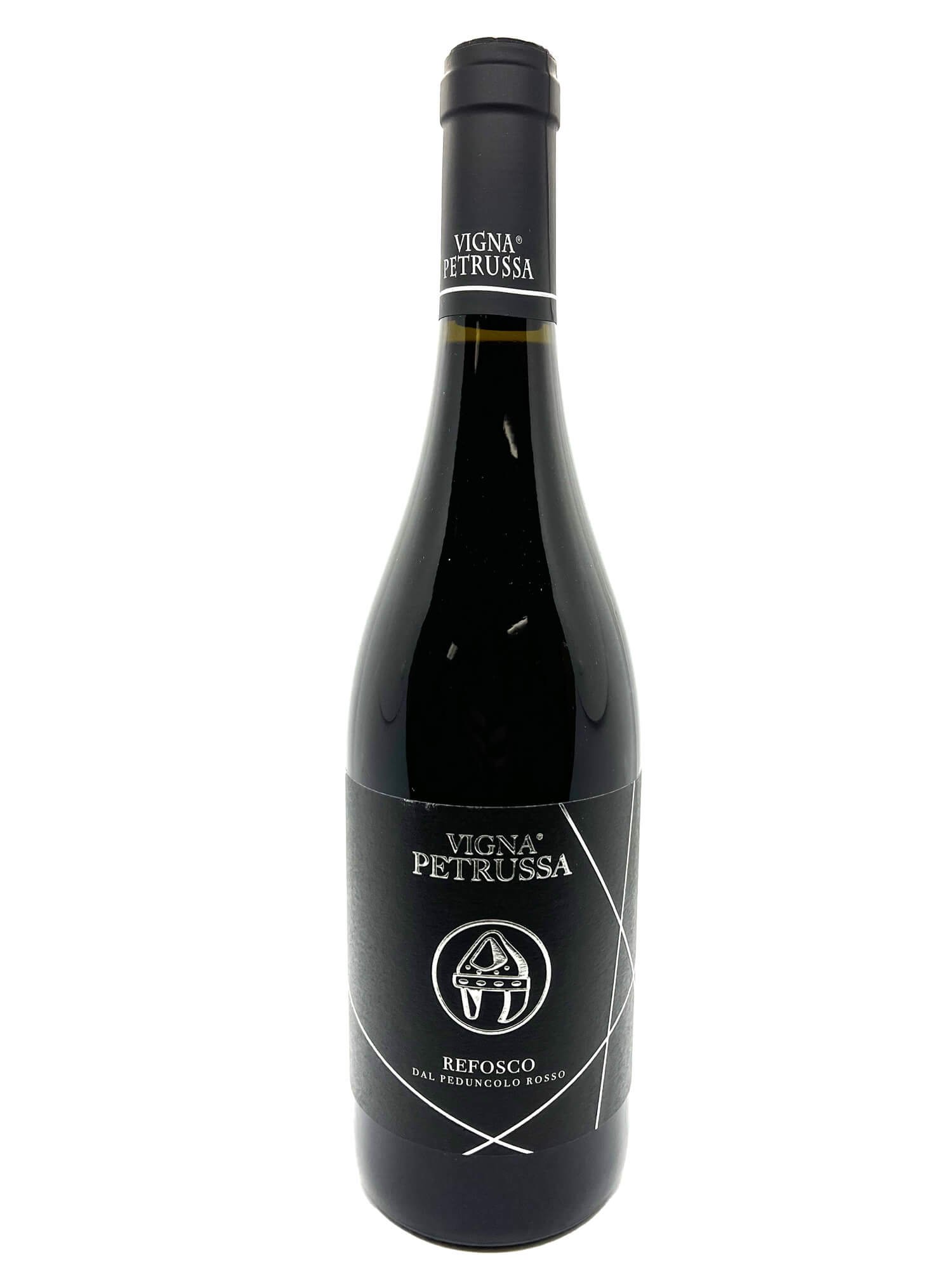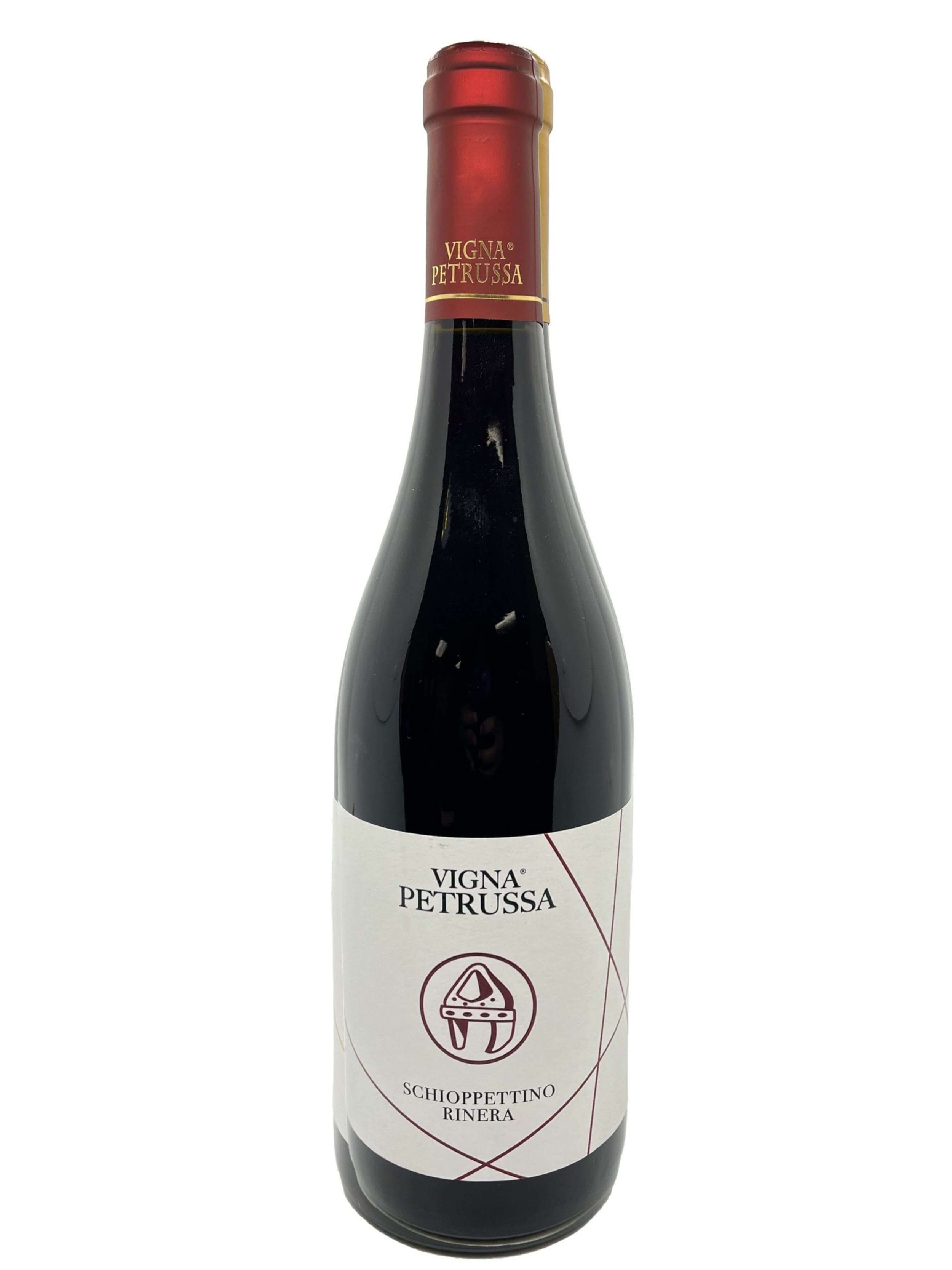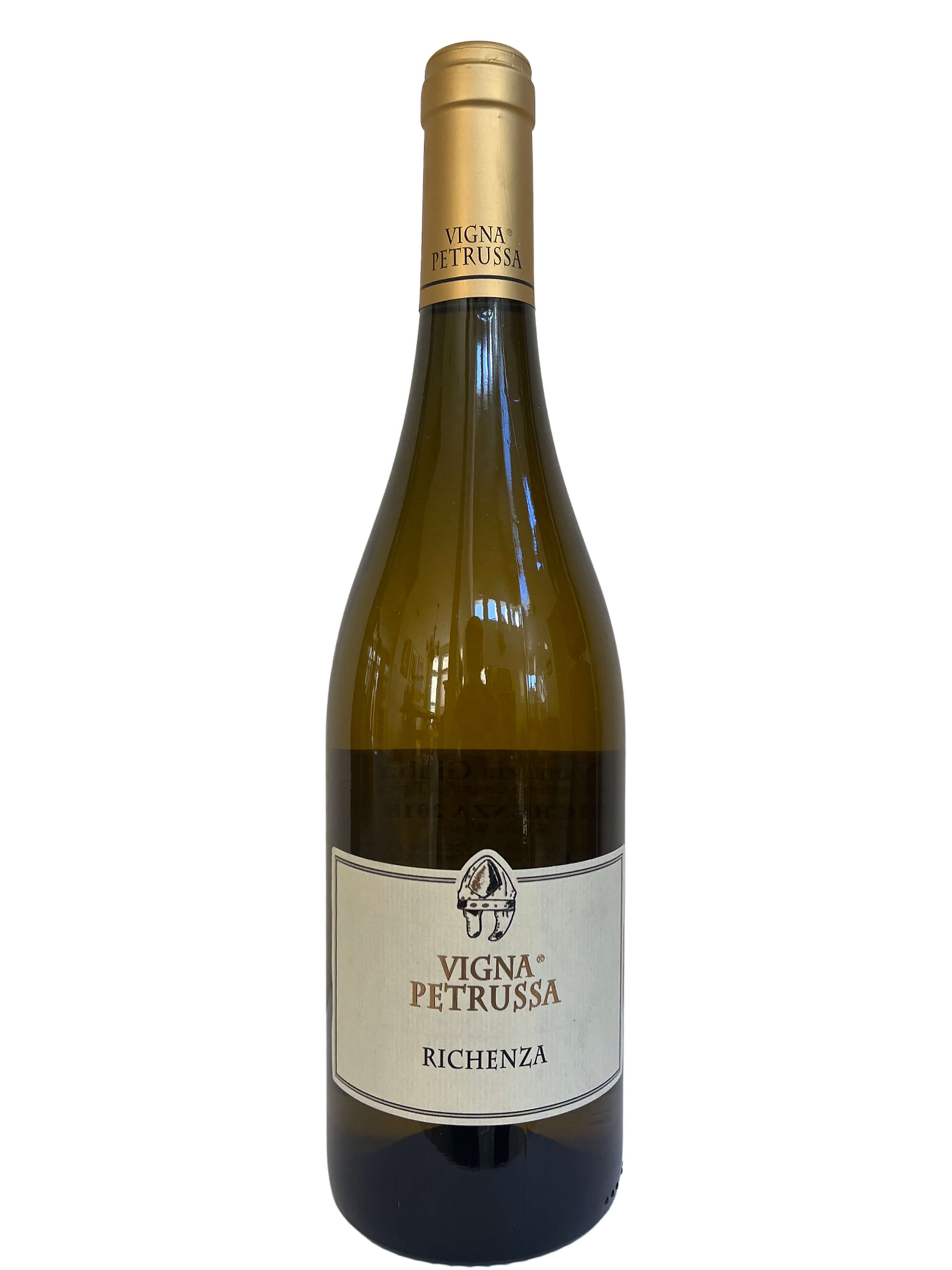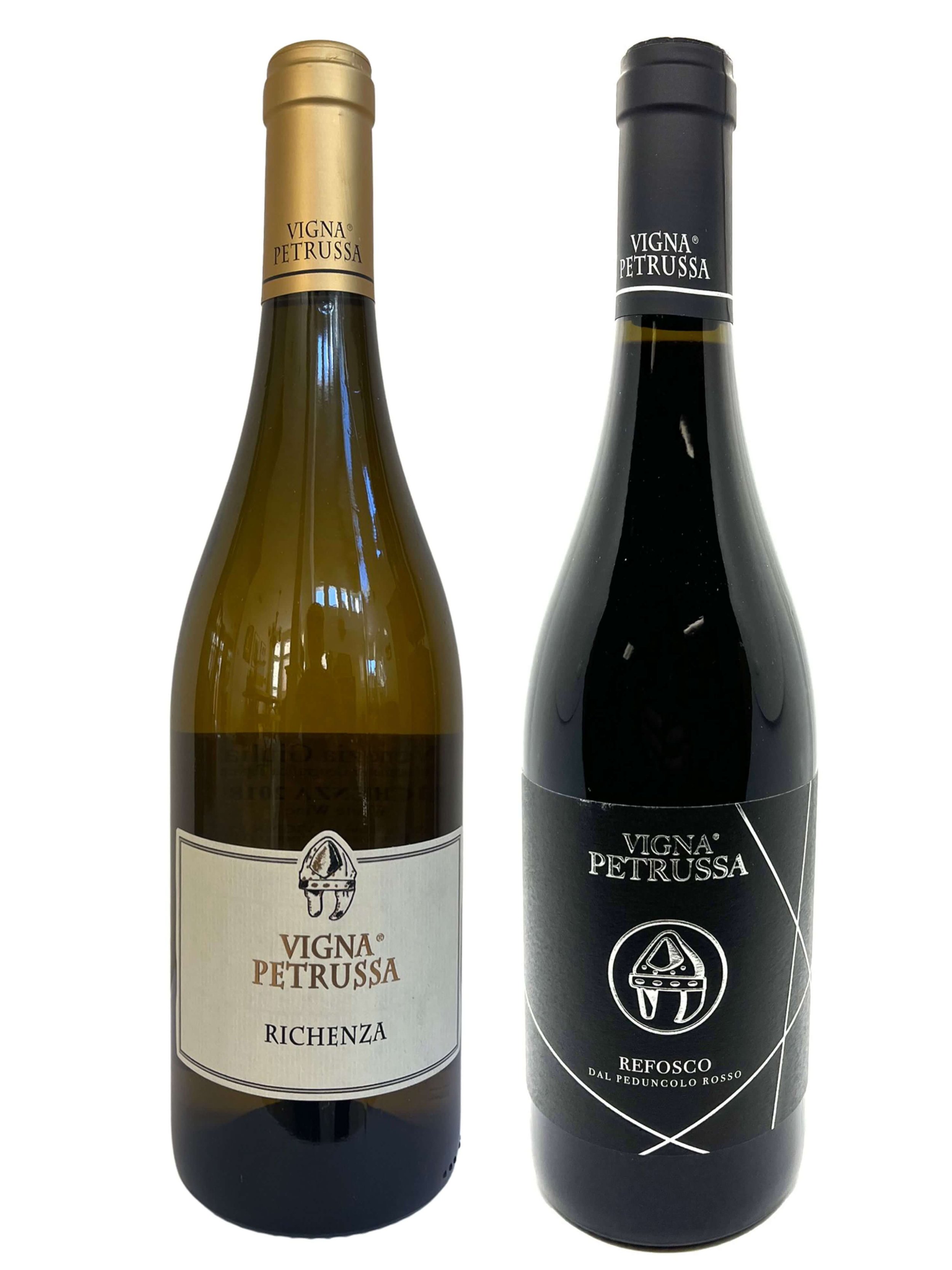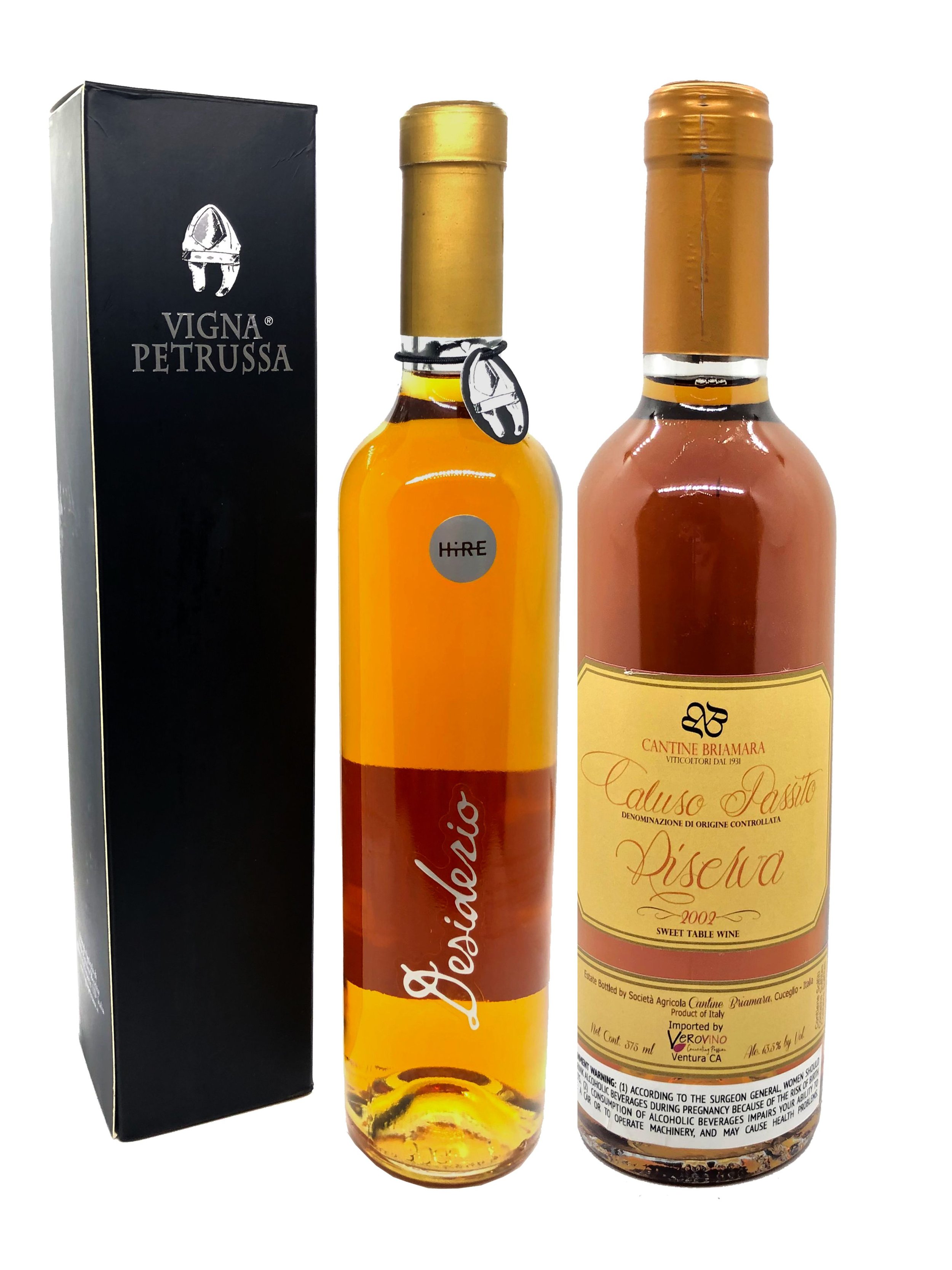The Makings of a Great Woman Winemaker
Vigna Petrussa, located in Friuli Venezia Giulia in the extreme Northeast of Italy right next to the border of Slovenia, is a special Italian winery. Yes, partly it is because of the many awards and high ratings they have garnered, in addition to incredible accolades from wine critics like “this is one of the best and most under the radar estates in Italy.” Not bad for women winemakers, huh?
In fact they are three generations of women: currently at the helm is mother-daughter team Hilde and Francesca: we’ve talked with them a lot about running the winery during the Covid pandemic, working as a mother and daughter duo, and we have even sat down to interview Francesca about her journey right as she was officially joining the winery with her mother, Hilde Petrussa, the second generation.
We have done many VeroTalks with the duo, but somehow we have never had to chance to really get to know Hilde herself. In this article, we explore the life and times of Hilde Petrussa in good old fashioned journalism style with our Vero version of the classic 5 Ws: Who, What, Where, Why, and Wine.
Who: Hilde and the Petrussa Family
For generations, the Petrussa family has been deeply rooted in their land. Starting with Hilde’s grandfather, Giobatta Petrussa, they cultivated grains and baked bread, and her father, Giovan, while specialized in flour milling, discovered a passion for the indigenous schioppettino grape. His limited-production Italian wine, enjoyed with close friends, was a testament to his love for the craft, but was characterized by a sweet style which was traditional at the time.
Hilde’s mother Giuseppina, or Pina for short, stepped up to the plate and took over the family business after her husband’s passing left her to raise 2 girls on her own. Destined to become the first woman winemaker of Vigna Petrussa, Pina doubled down on the winery: it is from Pina that we find one of Hilde’s largest fonts of inspiration, as, of course, the first female winemaker of the family. But perhaps, it is best to hear about Pina directly from her daughter, Hilde.
How do you remember your mother, what kind of person was she and how did she inspire you to follow in her footsteps with the family winery?
My mother was a strong and determined woman, and thanks to her character she was able to assert herself the world of viticulture, which in the 1970s was male dominated. She worked hard to assert herself and this further strengthened her character. I admired her very much for her strength and she was certainly a good role model for me. I don't hide that I have also inherited a good part of her character.
What is your favorite memory of your mother in the vineyards or winery? What is your most treasured lesson learned about wine and farming that you gained from your mother?
I remember that my mother paid close attention to the careful management of the vineyard and the winery, something that I also love to do today. Another aspect that struck me was her closeness with her employees, whom she treated like family: with care and respect. One fond memory I have is my mom, grateful for the work done by the vineyard workers, she personally brought hot drinks to them during cold winter days.
Hilde working in the vineyards.
And Finally, about Hilde Herself
Much like how her mother took over the winery and farm in midlife, Hilde, too, did not originally work in the winery; rather she was a school teacher. It wasn’t until after many years of working that Hilde decided it was time to come home. As she says it, “It was a call back to my origins that brought me back to Prepotto, the place where I was born and raised. I was, anyway, drawn to do this, as I had always remained in contact with nature and the family vineyards. Besides, my mother was getting on in years and needed more and more help; so I decided to change my life and return to my roots.”
Of course, we would be remiss to not talk about the importance of Hilde’s own daughter, Francesca in the winery. We had talked to Francesca 2 years ago, right as she, herself, was making the same leap mid career to join the family winery, just like her mother and grandmother before her. Originally studying architecture, and after living abroad in Spain and London, Francesca decided to come back to her, her mother’s and her grandmother’s roots in Friuli and work alongside her mother to breathe new life into Vigna Petrussa and their branding.
Where: Friuli Venezia Giulia, Italy
Location of Friuli Venezia Giulia in NorthEastern Italy, with Vigna Petrussa marked with a red dot on the Slovenian border.
Next in our discovery of this woman in wine, we turn to where she grew up and where her heart is: her family land in the area of Prepotto. Tucked into the Northeastern corner of Italy, Prepotto is in Friuli Venezia Giulia, often shortened to simply Friuli, and borders Slovenia, with Vigna Petrussa being very close to this border. The location of the Vigna Petrussa estate has hills surrounding with mountains to the north and the Adriatic Sea to the south. But once again, what better way to learn about and describe the terroir, land, territory of Friuli than from Hilde’s words herself.
What do you love about the area? What is it about your home and area that you appreciate the most?
This territory has remained largely untouched, and it has not been affected by the industrial development of the 1970s. The vineyards are located in an uncontaminated and non urbanized landscape, where nature reigns supreme with the vineyards and woods. It is this respect for nature that I particularly love and that I transmit to my art of making sustainable wine.
Why is your area so good for winemaking?
Hilde’s land has the Julian Alps to the north and the Adriatic Sea to the south creating ideal conditions for the bora, north eastern katabatic winds caused by air being forced from high elevations downwards.
This area is ideal for vine cultivation due to several environmental factors: first of all, the soil. Ponca soil is a mixture of marl and sandstone of Eocene origin (meaning it’s super old soil: some of the oldest fossils were found in Eocene soil!). This type of soil is particularly suitable for vine cultivation as it imparts great minerality and body in wines. The soil of the Judrio valley, where our winery is located, is especially suitable for the cultivation of schioppettino grapes (a red wine grape native to the Udine area where Hilde grew up and where she still lives). Secondly, the valley that hosts our vineyards has an ideal exposure to the sun and constant ventilation, which dries the grapes and keeps them healthy. (Hilde is referring to the bora, an ever present wind that naturally occurs in many parts of Friuli Venezia Giulia.) Finally, thanks to the make up of the physical landscape of the area, there is a strong temperature range between day and night, which favors the concentration of mineral substances in the grapes, making them richer.
How did this special land come into your family? Were there always vines planted, if not who planted them?
The family property has been in our family since the mid-1800s. My grandfather started it out as a small farm for the family to live off of, but over the years he used the farm to start a family business, including a flour mill, a bakery, a stable, and a grain and horse trading operation. In those days, agriculture was not as intensive as it is today, and farmers typically grew a variety of crops. One of the crops that my grandfather grew was grapes. It was when my mother took over the business, that she decided to focus exclusively on viticulture.
Vigna Petrussa vineyards, right next to their home, in Friuli. The boarder with Slovenia is right after the vines, where the trees are in the distance.
Who in your family actually started to make wine from the land first? How did that develop into becoming a family winery?
My grandfather was the pioneer and the first to make wine, and it was my father who began to produce different varieties, in particular, Schioppettino which he considered the most precious wine. This is why Schioppettino is so important to me today, being not only the jewel of all grapes cultivated in this valley, but also for the emotional and historical value which is linked to my family. With my management, I wanted to give new life and value to indigenous varieties and actually create the current brand of the winery: Vigna Petrussa.
What: Farming and Winemaking
Learning winemaking from her father and mother, it is no wonder that tradition and keeping to her roots is important to Hilde. However, she seems to always know where to draw the line between honoring long time held traditions and updating it to form a new tradition. Like a chef, she works and tweaks in her vineyards and wine cellar with all sorts of artisanal touches. For example, by air drying her grapes (like in Vigna Petrussa’s Desiderio, Perla Nera, and Refosco), she is able to round out the rough edges of certain varieties to make the wine more fruit forward, approachable and to her tastes.
Of course, this is all keeping the terroir of Friuli in mind, after all Hilde says, “My philosophy is to keep the individual characteristics of the vineyard intact and as honest as possible. That is why I also use indigenous yeasts in winemaking.”
How did you learn about wine? Who was your mentor?
I learned about wine from a young age, observing first what my father did, then by watching my mother. Since taking over the winery, I learned new vineyard cultivation techniques with the help of an expert agronomist, who still follows and helps us women at Vigna Petrussa to be respectful of the environment and the natural characteristics of the individual vines.
My mentor in winemaking is tradition; following in my mother’s, father’s, grandfather’s footsteps, with the contribution of new techniques. In making wine, it is my intention to respect the territory and the natural indigenous expressions of the individual vines.
Vigna Petrussa vineyards.
What are your jobs in the winery and on the farm? What is your favorite part of your job?
I follow everything, from the field to the cellar, to the marketing, but the part I prefer most is the winemaking. It gives me the opportunity to transform a cluster of grapes into different possible interpretations. The winemaker role is a technical support to my creations.
What are some changes to the winery and vineyards that you initiated after you took over from your mother?
After taking over, I uprooted many vines of international grape varieties to focus more on the native ones, especially schioppettino. I seeded grass in the vineyards to avoid the use of herbicides, and I introduced the guyot vine training system with lower yields to increase the quality of the wines.
How has your winemaking style and methodology changed over the years since you started running the winery?
Through various experiments, I have tried to produce wines that maintain their typicity and authenticity that is linked to the territory. Over the years I have tried different types of winemaking techniques and tried aging wines in different types and formats of wooden barrels.
What are some recent changes that have been implemented in the winery and vineyards?
Our vineyards have been SQNPI certified since 2020. SQNPI is a certification for environmental sustainability. This is without, however, changing how we do things; it was just how we naturally farmed and produced our wines. Another recent change has involved the corporate branding, with new packaging created thanks to the entry of my daughter Francesca into the company and her innovative ideas.
Talking about farming sustainably, what are some recent impacts you have noticed in the vineyards due to climate change? How are you confronting them?
The constant increase of the temperature in recent years has forced us to create a backup irrigation system using rainwater. To protect the grapes from possible overexposure to the sun and burning, we now leave more leaves and vegetation on the plant to help protect the clusters from the hotter direct sunlight.
Why: Passion for Wine
When speaking with Hilde, something that comes through loud and clear is her passion for wine, winemaking, and caring for her vines. Her tendency in the vineyards is to take the utmost care of her grapes, employing an entire team to carefully watch over the plants and the fruit. For Hilde, making sure her grapes mature in the best conditions and on the healthiest vines possible is paramount. But aside from love for her job, what are some of her other loves in wine?
Hilde with an oak barrel in the Vigna Petrussa winery.
What is it that you love most about wine in general?
I love when a wine conquers you with its bouquet and on the palate, and when it is balanced and elegant.
What is your favorite of your wines? What is your favorite wine that isn’t from your winery?
Of my own production, I love the Schioppettino di Prepotto, for its long history linked to family tradition and to the territory. I also love our white wine blend Richenza because it represents a long personal journey of experimentation with native vines that express themselves best in this land. Of the wines that I do not produce, I love Riesling and Pinot Noir wines.
Looking to the future of Vigna Petrussa, are there any new projects or initiatives you are starting up that you can share with us?
Our goal for the near future is to make our business increasingly more green and sustainable.
And the Last W… Wine!
Now we have come to our own addition to the 5 Ws: Wine! As you may have guessed reading this article, this Friuli, Italy winery produces some mighty fine wines.
Coming from the land of white wines, Friuli, Vigna Petrussa makes some fabulous white wines like Hilde’s favorite, the white wine blend from indigenous varieties, Richenza to Sauvignon Blanc, and Friuliano (which, due to its popularity, we are sold out on and importing more in soon!)
It is in their red wines where Vigna Petrussa particularly stands out, especially their work with Schioppettino, where Hilde’s prowess comes through. The Schioppettino lineup starts with the unoaked RiNera, then moves in to the Schioppettino di Prepotto which Hilde lets age for over two years in oak barrels, and finally, the Schioppettino Riserva, aging for over three years in the barrels before bottling. Throw in a glass of Perla Nera to round out the Schioppettino gamut, with the air-dried schioppettino grapes taking on a whole new set of flavors what we think is one of the best sweeter wines.
Speaking of some of the best dessert wines, Hilde flexes her air-drying muscles with two other dessert wines: the passito Desiderio and Picolit, the botrytis infected wine that VinePair named one of its Best Sweet Wines.
Lastly, no Vigna Petrussa mention would be complete without talking about their last two red wines, Rebusson (a blend of international varieties that grow particularly well in Friuli) and Refosco where again Hilde masterfully blends air dried grapes into the wine for a whole new level of depth and complexity.
Hilde with the Vigna Petrussa crest, a Lombard helmet as a tribute to the Friuli history.
Come Meet Hilde In Houston Texas in March
We are honored to have Hilde and her daughter Francesca stateside once again (their last trip together was just before Covid hit in March 2020!) Hilde was handpicked by renowned author and expert of Italian wines, Ian D’Agata, to feature their wines at his Masterclass on Northern Italian wines on March 4th in Houston. Come meet up with us and taste the wines of this woman master - see details here.
And check your calendars, because in March, not only Hilde but also her daughter Francesca will be stateside, but also another woman owned Italian winery, Antonella Manuli of La Maliosa. They are all looking forward to meet, greet and taste with wine lovers, from Texas to California. Join us as we travel with these admirable women farmer artisans to hear their stories first hand and try their expressive and tasty wines and organic EVOOs.
Just as a reminder, we sell our carefully curated portfolio of small production wines and olive oils to both businesses and consumers across the US:
We are enlarging our network of distributors around the country. Reach out to us if you are interested in distributing our wines.
We sell to wine stores and restaurants in certain states - contact us if you would like more info.
We do corporate gifts and sommelier guided wine tastings. Email us and we’ll tailor unique and sustainable corporate gift ideas.
If our farm crafted wines and olive oils are not in your local shop or restaurant buy wine online here and we’ll ship it to you, including wine gifts, and we ship to most states.
We also have an award winning wine club for true wine explorers seeking to continually discover unique, sustainable and authentic small production wines they never had.

